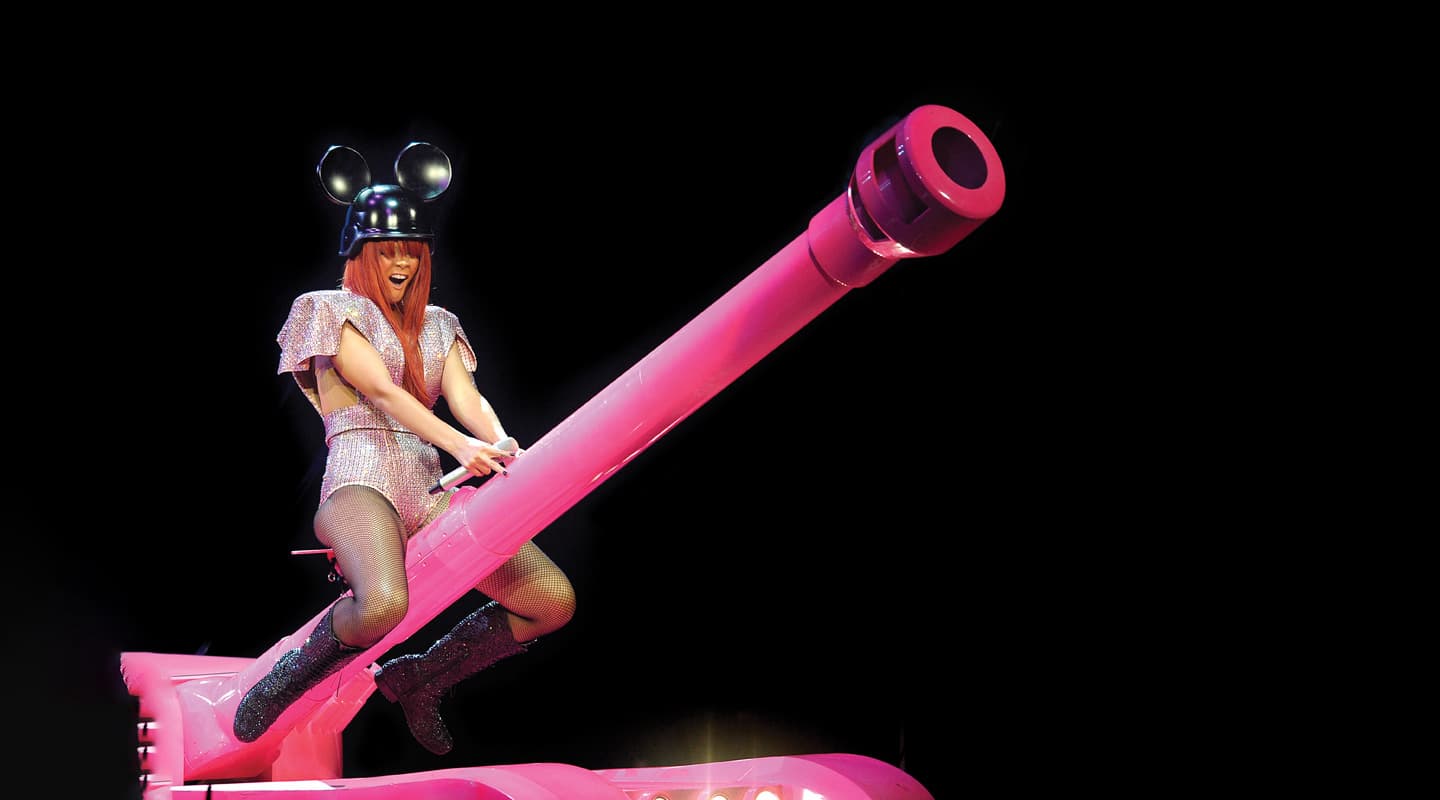
Booty Shaker: Rihanna Live
Rihanna live is a raucous, rockin’ R&B show with ’tude… and auto-erotic tank stunts.
Rihanna doesn’t shy away from a bit of raunch. It’s an all-ages show but she pulls some moves that most parents would prefer their teenage daughters didn’t rehearse in front of the mirror. Auto-erotic acts performed with a full-size pink tank might be high on that list. “Courtney-Bree, get off your father’s tank this minute!”
I also fear for Rihanna’s Sennheiser SK2000 wireless mic – at least, the extra-curricular activities it might be asked to be party to during the show – but FOH engineer Tony Blanc allays my concerns: “no audio equipment was harmed in the production of this concert.”
DOIN’ THE DIVA
Tony is a good-natured Pom who’s a decade-long veteran of pop-diva touring. Prior to the Rihanna tour he spent seven years with Christina Aguilera. Meanwhile, good-natured Yank, Bill Chrysler, the monitor engineer, spent 11 years touring with Aguilera… 11!.
But don’t ask Tony how he’s got himself a name as a diva tamer, it’s not something he’s cultivated, but no-one’s holding a gun to his head; he’s clearly enjoying himself. And why not? Rihanna is right at the top of the pop music tree. She’s got a kick-arse band behind her, a genius musical director and some of the best songs money can buy.
Tony Blanc: I’ve worked with the Tony Bruno [Musical Director] before and he’s incredibly talented. He takes the song and translates them so they have a very different energy to the record – a whole new live personality. Management wanted a live, rock profile and they definitely created that. The guitars certainly contribute to that because some of the songs don’t have any guitar in the production. Our guitarist is Nuno Beckencourt and he’s full on – a 44-year-old shredder.
Unfortunately we lost one guitarist and one keyboardist for this leg of the tour – so those ‘second’ parts are on ‘tape’. But it’s still a very deep-sounding show and about 80 or 90% of the parts are played live. The only things in the ‘box’ are the loops – the samples. You need those distinctive parts that the kids can relate to from the record – the funny little guiro sound every second bar… that sort of thing.
CH: Rihanna sings the whole show I assume?
TB: She does. And she has two backing vocalists for support.
CH: But she’s fit enough to sing and do all the on-stage calisthenics?
TB: She’s not yet figured out she doesn’t have to sing. Christina Aguilera figured that out. When I started my seven-year stint with Christina, not a single word was in the box. When I left, only one third of the show was live. Saying that, for the last part of the tour, she was very pregnant and she figured out pretty quickly she didn’t have to sing it.
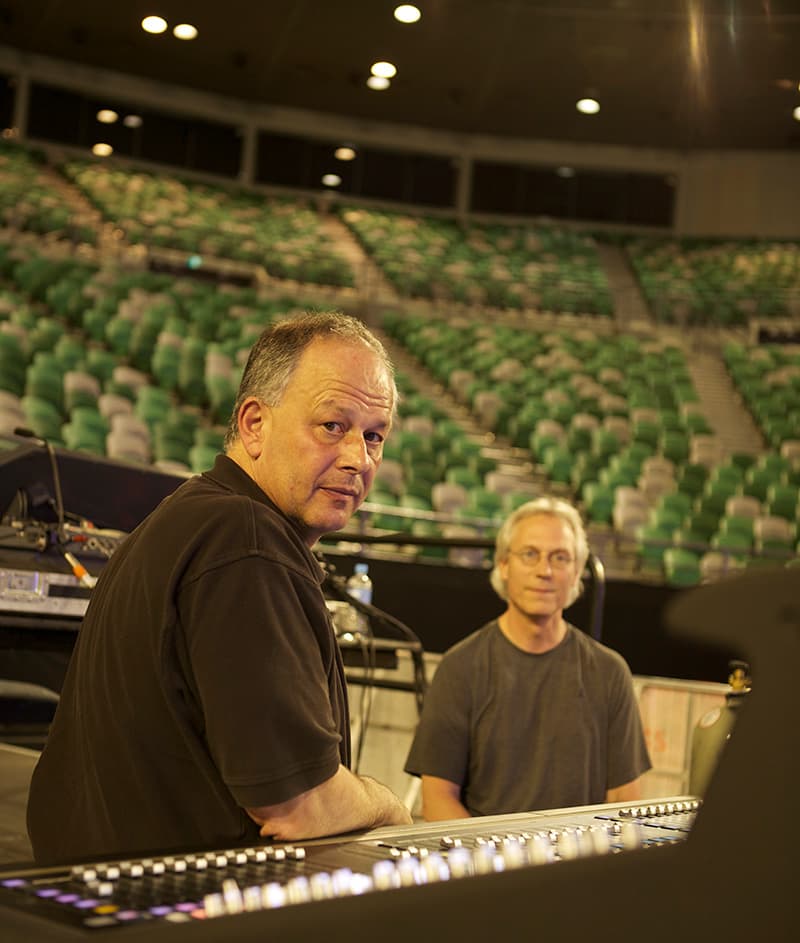
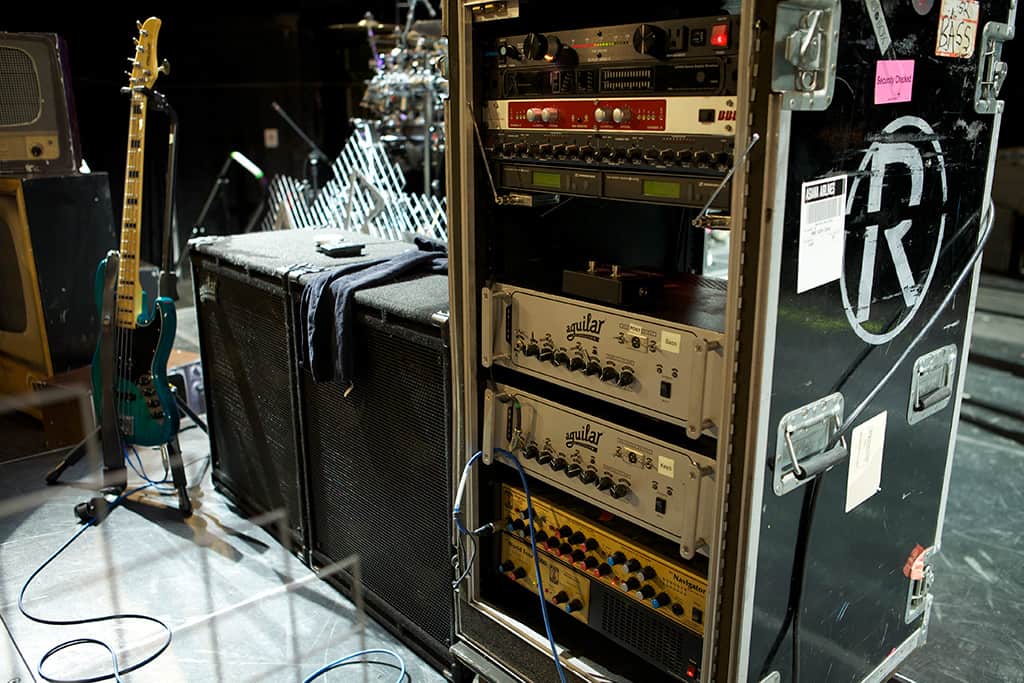
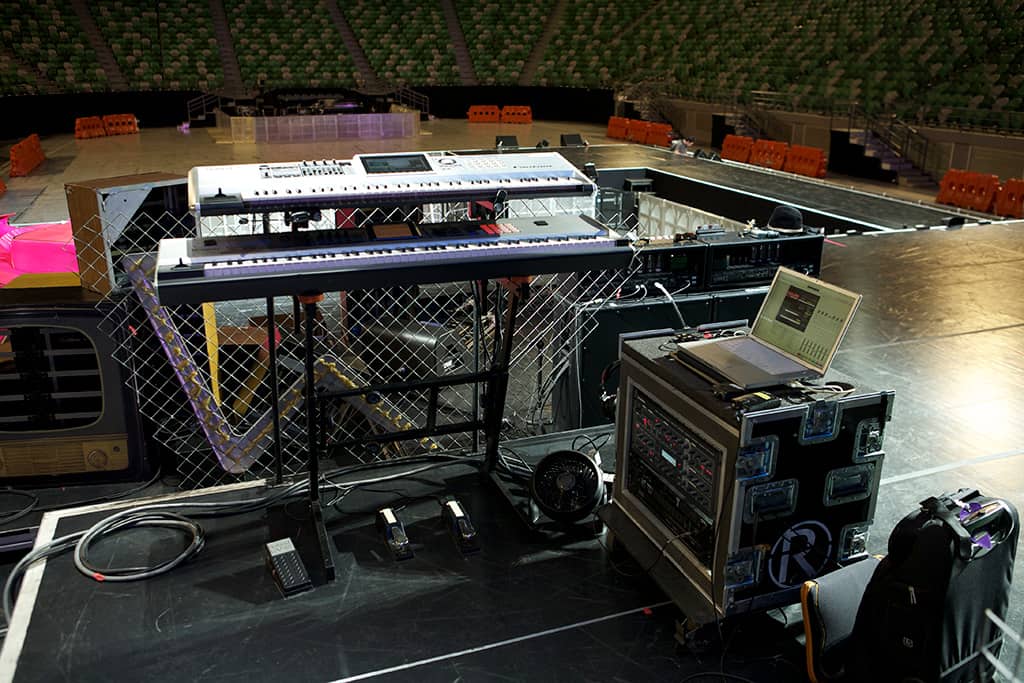
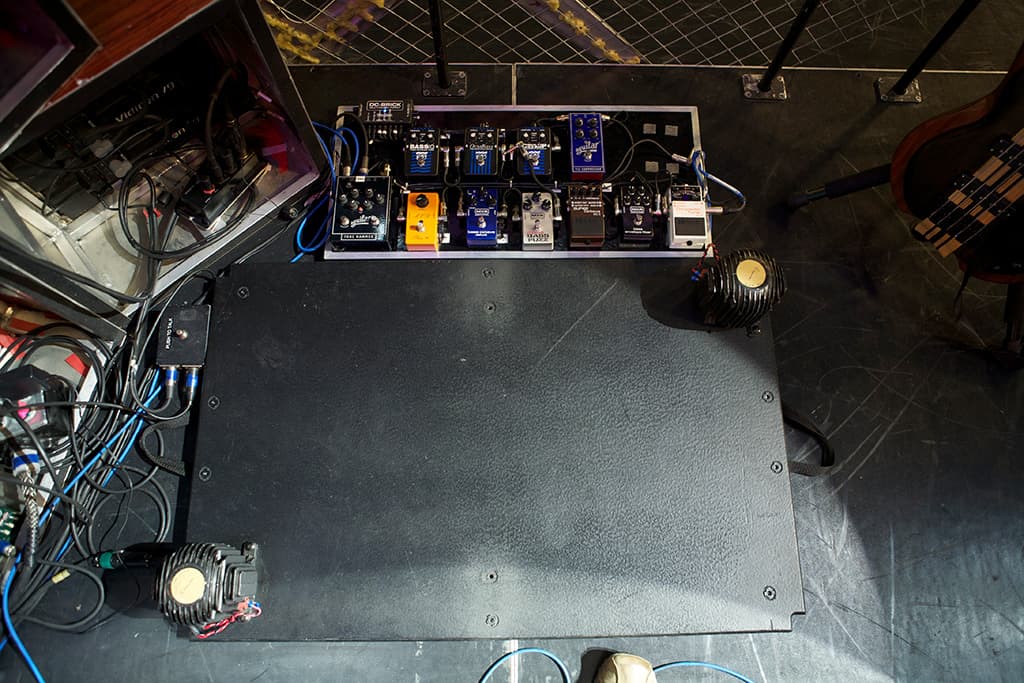
MICS: AN UMBRELLA STATEMENT
CH: What’s been your approach to mic selection, and pulling a big R&B mix?
TB: I don’t want to come across like I’m some kind of rocket scientist, because it’s not that hard. It’s about controlling what you’ve got and figuring out where you’ve got to control it. Mostly it’s in tasteful compression, intelligent gain structure and putting the right mic in front of the instrument in the first place. It’s about ensuring it sounds like the instrument rather than trying to sculpt it later in EQ.
CH: You work on a Digico SD7 – what are you referring to, when you’re talking about intelligent gain structure?
TB: Digital boards have a sweet spot. You need to know how hard to drive it. It’s not like a Midas XL4 where you can have it squirting blood and it still sounds great – using the board’s inherent harmonic distortion. There’s natural limiting on a digital board if you get up into that zone. But if you overload it and get right up to the top of that zone, then it’s all over.
CH: I assume you don’t need to run the SD7 too hard – there’s plenty of clean gain there?
TB: You could probably run a kettle at the back end of it, what with the amount of current it produces! It’s ridiculous. You’ve got 60dB of continuous gain. But it’ll be red for days and it doesn’t sound good when it’s distorted.
VOCALS: WHIPPED INTO SHAPE
CH: What’s Rihanna like to work with as a vocalist?
TB: She works hard. She uses one in-ear monitor and works off the house sound, and it’s not a quiet show. She sings loud.
CH: What mic are you using on her vocal?
TB: It’s a Sennheiser e965 one-inch condenser capsule, with a SK2000 body. We went through a bunch before we settled on this combination. I’ve done a lot of tours with Shure products and the Sennheiser stuff I thought sounded weaker. They’re a funny bunch because they didn’t tell me what the top of the range kit was until I figured it out myself. “Oh, you’ve picked the best mic in our range.” “Funny about that, I did want to drive the Rolls, not the Mini.”
We’ve got the best stick and receiver now as well. It sounds good. There’s enough bling on it, so she likes it. It’s a large mic but it suits her.
CH: She does something unmentionable with the mic though?
TB: No she does that with the tank, the machine guns and the whips.
CH: Right, my mistake. Do you have to keep a constant eye on Rihanna’s fader?
TB: The problem I have is that she spends a third of the show holding an open condenser mic 20 metres in front of the PA on the stage thrust. But I figure, if she can stand in front of sidefills she can stand in front of a PA. Plus, she’s bright enough to realise she needs to have her head between the capsule and the speaker box. Or move if it starts to take off. It’s either her moving the mic or me moving the fader to get that feedback to drop.
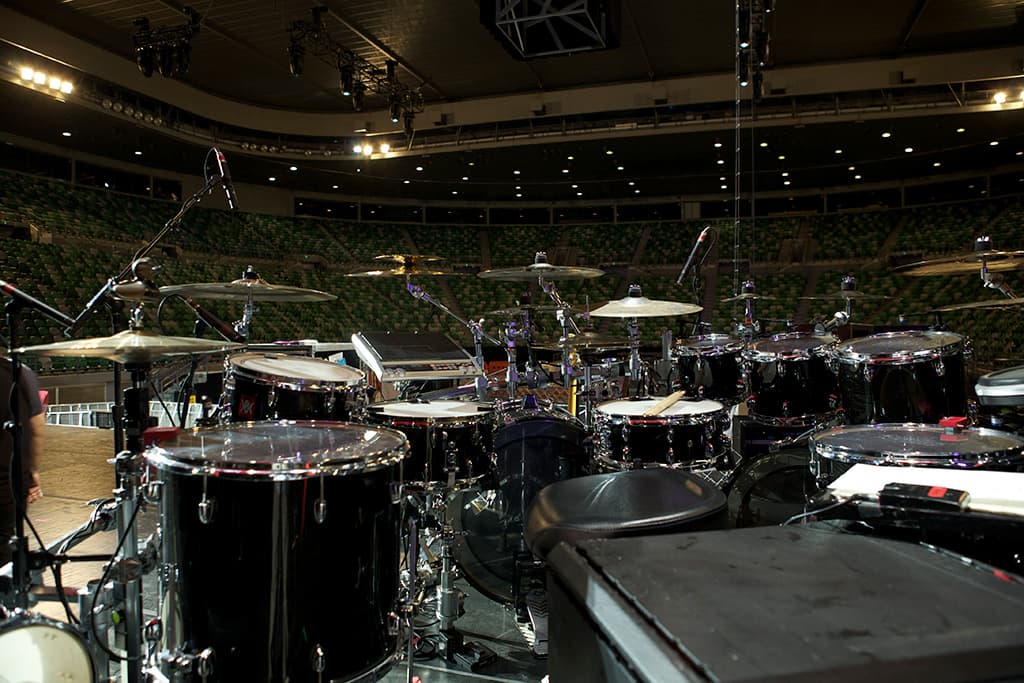
RACKED ’N’ READY
CH: It’s a little unusual to see a FOH rack of outboard goodies like yours these days?
TB: Yeah, it’s all thanks to eBay.
CH: So it’s your gear then?
TB: That’s right, I bought it all. Some of it’s esoteric stuff that I like and I’m too embarrassed to ask the service companies to buy this stuff every time I turn up.
CH: Clearly you’re a Crane Song fan?
TB: I am. I like the fact I can dial up very different compression characteristics out of the Trakker and the STC-8. Very versatile.
CH: How do you use the STC-8?
TB: I have one in my rack for snare and bass.
CH: Do you use an output bus compressor?
TB: I do, but the way I set up my mix – and I’ve done it this way for years with console compression – is: I run a vocal master (lead and backing vocals), and a band master. So I can run a different ‘PA’ compression on the vocal than I do with the band. The idea is, especially with PAs that have compression in them like we have here, and you want to cheat it, and in the same way you’d make a record loud on the radio – chop the peaks off so that your average level is higher. I’ve had shows where I’ve been ‘quieter’ than the support band, when in fact we’re much louder, just without the peaks.
CH: Have you given the Crane Song HEDD a crack as well? [The HEDD adds tube ‘warmth’ to a digital signal.]
TB: I have. In fact, I have a HEDD across the band sub master. By using the Pentode setting, the HEDD warms up the sound of the digital board nicely.
R&B: SLAP & TICKLE
CH: You’re an old hand at booty-shaking mixes. What’s the secret?
TB: In a nutshell: bass and kick, and make sure everyone blinks every time the snare goes off. There’s a lot of low end in the show. It’s not polite.
CH: But it’s about achieving the results without simply throwing a huge amount of voltage at it.
TB: That’s right. It’s about getting the desired effect at a lower volume. I must confess, I do have a dbx 120x bass synth in the back of my rack – when I really want to rattle bones. The thing is, the kick drum doesn’t go down below 100Hz. Below that the lower frequencies are created by a hole in the drum head which gives the thump – but it’s not the drum that goes down that low, it’s the electronics. The 120x gives you those harmonics straight off the bat – down to 40 cycles, pumping out air. So long as the sub-bass is tight, with plenty of punch, it works.
CH: You must spend a lot of time fine-tuning your subs?
TB: You can’t have a ‘note’ in the subs. A lot of manufacturers tune a cabinet to a frequency that they want it to be efficient at. But on a kick drum you can’t have it efficient from 40-80Hz when you’ve got an 808 kick drum sample going down to 30Hz – it’ll have a big bump in the response. So the subs should be as smooth as possible down to 30Hz, without any inherent notes.
FUN WHILE IT LASTS
CH: What’s the best part about mixing Rihanna?
TB: I like the songs; the material is nice and the playing is great – the drummer is incredible… they’re all good players. In fact, turn the machines off and it wouldn’t make any difference, it’d still sound great. Actually, the drummer wants to play the machine parts because he’s offended by the fact there’s a backing track! So there’s a lot of stuff going on. It’s not as busy as the Christina show, which was like mixing a Phil Spector record!
CH: What next?
TB: We’ll have a month off to get a new show prepared based on the current record and then we’ll be back on the road. We actually recorded the current record on the road – we had a truck with us and she recorded ‘after hours’. But there will be a break this time around; they anticipate us finishing March next year.
CH: And then do it all again?
TB: Yeah, I’ve gotta retire somehow!
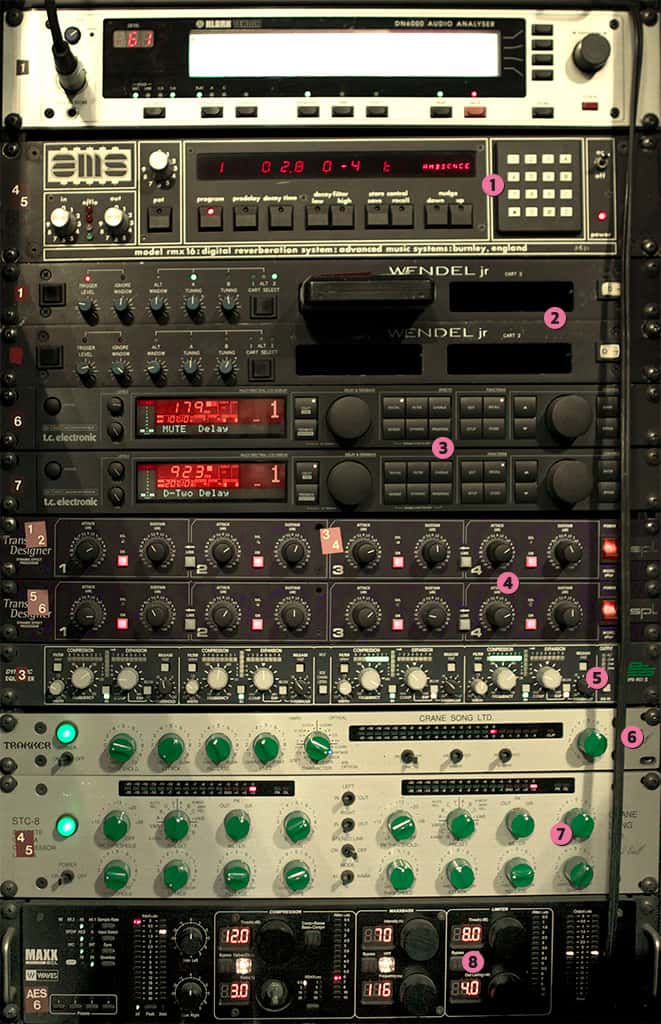
TONY BLANC TALKS US THROUGH HIS RACK
1. AMS RMX 16
Clean reverbs don’t ‘read’ so well in this digital age, you need something with a bit of grit. This reads beautifully.
2. Wendel jr
Kick and snare cartridge for EQ’ing the PA. Developed by Roger Nichols, best known for mixing Steely Dan.
3. TC Electronic D-Two
Short delay on one unit, and a long delay on the other.
4. SPL Transient Designer
Fantastic for shaping the kick and tom. Some rooms I’ll decrease the sustain on the kick so it’s nice and tight. Other rooms I’ll increase the sustain on the toms for some controlled extension on the sound. It’s one of those things where it just makes drums sound better without turning a knob.
5. BSS DPR 901
Multi-band compression on vocals. 3.5kHz is the problem area for many female artists. I use the other filters to give air when she is talking and clean up the low mid occasionally.
6. Crane Song Trakker
I set this to the ‘Vintage’ compression setting on Rihanna’s vocals.
7. Crane Song STC-8
Gives you a mix of valve, solid-state, soft or hard compression sounds. One side is used for the bass guitar, the other side is across the snare.
8. Waves Maxx Bass
I use these on toms. Allows you to squash the hell out of the them and they don’t change the colour of the sound. Drummers think they’re doing great by tapping it to go full flam but trying to follow that in a mix and keep them ‘reading’ is impossible. Maxx will compress them and smooth out the sound.


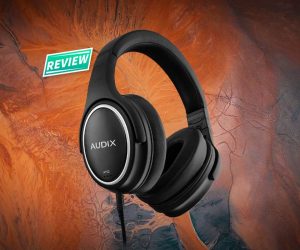
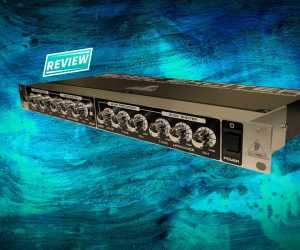


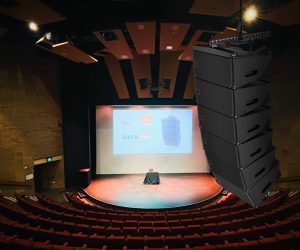
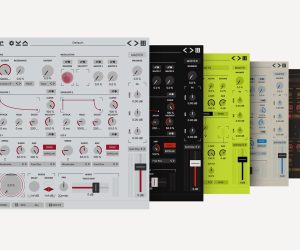
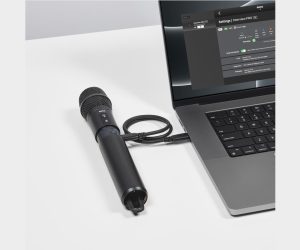
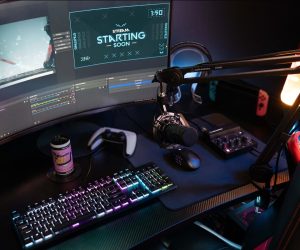
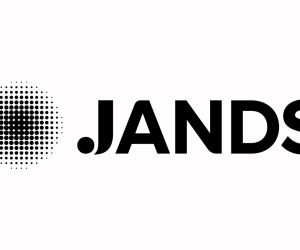
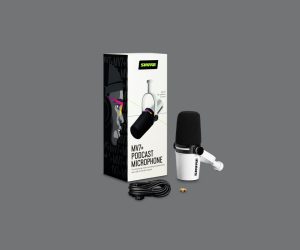
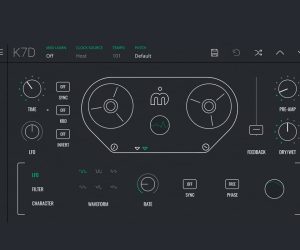
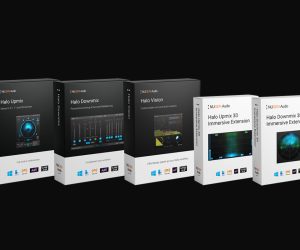


RESPONSES